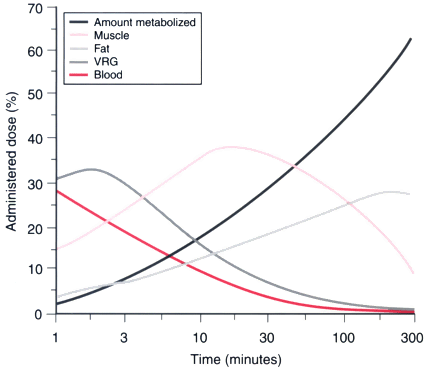 |
 |
Figure 10-9
After delivery of an intravenous bolus, the percentage
of thiopental remaining in blood rapidly decreases as drug moves from blood to body
tissues. The time to attainment of peak tissue levels is a direct function of tissue
capacity for barbiturate relative to blood flow. Thus, a larger capacity or smaller
blood flow is related to a longer time to a peak tissue level. Initially, most thiopental
is taken up by the vessel-rich group (VRG) of tissues because of their high blood
flow. Subsequently, drug is redistributed to muscle and to a lesser extent to fat.
Throughout this period, small but substantial amounts of thiopental are removed
and metabolized by the liver. Unlike removal by tissues, this removal is cumulative.
Note that the rate of metabolism equals the early rate of removal by fat. The sum
of this early removal by fat and metabolism is the same as the removal by muscle.
(Redrawn from Saidman LJ: Uptake, distribution and elimination of barbiturates.
In Eger EI [ed]: Anesthetic Uptake and Action.
Baltimore, Williams & Wilkins, 1974.)

 |
